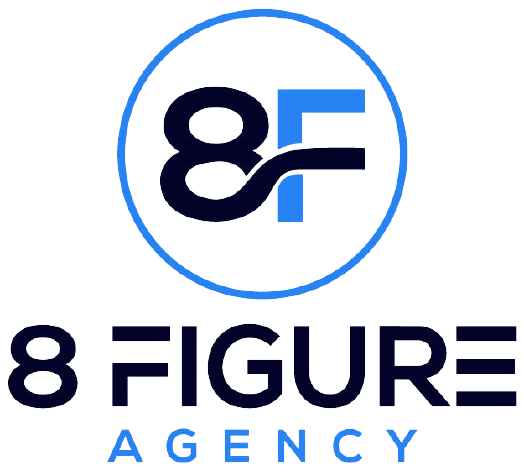Imagine your productivity as a river flowing through the landscape of your goals. Just like a river, your ability to achieve greatness depends not only on the energy you possess but also on the capacity of the vessel that channels your efforts.
This analogy encapsulates the essence of the capacity equation—an intricate formula that holds the key to unlocking optimal productivity, allowing you to harness your potential like never before.
In this post, let’s dive into the capacity equation or the capacity utilization rate to help you maintain peak productivity and scale your business to 8-figure success.
Understanding the Components of the Capacity Equation
At its core, capacity refers to the maximum potential of a system to produce or deliver. Whether it’s the number of products manufactured, clients served, or tasks completed, capacity signifies the upper limit of what’s achievable. However, it’s crucial to note that capacity isn’t just a static number; it’s a dynamic concept that can be fine-tuned and optimized.
Factors Affecting Capacity: Balancing the Equation
Capacity isn’t a solitary number; it’s influenced by a multitude of factors. From physical resources like machinery and workforce to intangibles like expertise and time, a delicate equilibrium must be maintained.
External factors such as market demand, technology, and even regulatory constraints further impact the capacity equation, making it a nuanced dance of variables.
The Role of Utilization in Capacity: Maximizing Efficiency
Utilization is the heartbeat of capacity—how effectively are you putting your resources to work? Optimizing utilization ensures that every resource is contributing to overall productivity, preventing waste and bottlenecks.
How to Calculate Capacity: The Formula Unveiled
Calculating capacity isn’t a mere mathematical exercise; it’s an art of understanding and synthesis. By factoring in the resources available and their efficiency you can arrive at a comprehensive understanding of your capacity. This capacity calculus isn’t a one-size-fits-all affair; it’s tailored to every unique situation.
Capacity Utilization Formula = (Actual Output/ Potential Output) x 100
- Actual Output: This parameter represents the real, tangible production or output that an organization has achieved within a specific timeframe. It reflects the actual quantity of products produced, services rendered, or tasks completed.
- Potential Output: Potential output is the theoretical maximum production that could be achieved under ideal conditions. It represents what the organization could produce if all resources were fully utilized, processes were operating optimally, and there were no constraints or disruptions.
Here’s an example to illustrate the concept:
Suppose a manufacturing company produces 800 units of a product in a month. However, based on its production capacity and ideal conditions, it could potentially produce 1,000 units in the same time frame.
- Actual Output: 800 units
- Potential Output: 1,000 units
Now let’s plug these values into the formula:
Capacity Utilization = (800 / 1,000) x 100 = 80%
In this example, the company’s capacity utilization is calculated to be 80%. This means that the company is operating at 80% of its maximum potential output. The remaining 20% represents the untapped capacity that could be utilized by improving processes, increasing efficiency, or allocating resources more effectively.
A high capacity utilization percentage, such as 90% or above, indicates that the organization is efficiently using its resources and is close to operating at its full capacity. On the other hand, a low percentage might suggest inefficiencies, underutilization of resources, or factors limiting production.
It’s important to note that capacity utilization can vary based on factors like seasonality, demand fluctuations, maintenance schedules, and unexpected disruptions. Monitoring and analyzing capacity utilization over time can help organizations make informed decisions about resource allocation, production planning, and process improvements.
Practical Applications of the Capacity Equation
The capacity equation isn’t just a theoretical concept; it’s a powerful tool with real-world applications across various industries. From fine-tuning operations to ensuring efficient resource allocation, the capacity equation plays a pivotal role in optimizing productivity and achieving organizational goals.
Capacity Planning for Businesses
Capacity planning is the North Star for businesses seeking to navigate the turbulent waters of growth and market fluctuations. It involves projecting future demand, assessing existing resources, and aligning these elements to ensure that an organization is prepared to meet customer needs while avoiding bottlenecks or under-utilization.
Imagine a retail business gearing up for the holiday season. By employing the capacity equation, the business can estimate the expected increase in demand, adjust inventory levels, and ensure a sufficient and high-performing team to handle the surge in customer activity. Capacity planning is essentially the art of foresight—anticipating demand and optimizing resources to capitalize on opportunities.
Capacity Utilization in Manufacturing
Manufacturing industries thrive on efficiency, and capacity utilization is the choreographer of this intricate dance. Imagine a factory floor where every machine hums with activity, seamlessly producing goods without interruption. The capacity equation guides manufacturing managers in maintaining the optimal balance between supply and demand.
For instance, an automobile manufacturer using the capacity equation might determine that it can produce 1,000 cars per month based on its resources and production line efficiency. If actual output consistently hovers around 900 cars, it suggests that there’s room for improvement. By pinpointing areas of underutilization and making adjustments, the manufacturer can inch closer to reaching its full potential.
Capacity Planning in Service Industries
Capacity planning in services is all about matching resources to demand. In the marketing industry, for instance, a marketing agency can use the capacity equation to strategically allocate its creative and analytical talents to various projects. Just as a hotel aims to ensure each guest receives exceptional service during peak season, a marketing agency strives to deliver winning marketing proposals, compelling campaigns, tailored strategies, and impactful results to its clients.
Consider the launch of a new product by a client company. The marketing agency can leverage the capacity equation to determine the optimal allocation of its experts, from graphic designers and content creators to digital strategists and data analysts. By ensuring that the right mix of talents is assigned to the project, the agency can meet tight deadlines, maintain consistent quality, and provide valuable insights to the client.
Furthermore, capacity planning within the marketing industry extends beyond just human resources. It involves anticipating surges in demand for various marketing services, such as social media management, SEO optimization, and content creation. By analyzing historical data and industry trends, the agency can align its team, resources and service offerings with the evolving needs of its clients.
Capacity Planning in Project Management
Whether it’s a construction project or software development, capacity planning prevents resource shortages and timeline delays.
Consider a software development project with a fixed deadline. By applying the capacity equation, project managers can allocate tasks based on resource availability, preventing overburdening of team members and potential bottlenecks. It’s a proactive approach that enhances project efficiency and client satisfaction.
And speaking of efficiency and optimization, this is where the expertise of the 8 Figure Agency comes into play. Our services aren’t just about growth; they’re about refining operations, streamlining fulfillment processes, and enhancing overall management efficiency. If you’re looking to elevate your agency to 8-figure success, our tailored solutions are designed to guide you toward excellence.
Learn More About How We Can Help You Achieve 8-Figure Success
The Importance of Capacity Equation in Operations Management
The capacity equation assumes a pivotal role in the optimization of production processes, resource allocation, lean manufacturing principles, and demand forecasting.
Optimization of Production Processes
Every production process is a masterpiece in the making. The capacity equation acts as the guide, ensuring that the factors of time, labor, and materials converge harmoniously to create the final product. By embracing the capacity equation, business and agency operations managers can fine-tune processes to eliminate waste and inefficiencies.
In an automotive assembly line, the capacity equation ensures that each stage of manufacturing synchronizes seamlessly. For instance, by using the capacity equation, engineers can determine the optimal cycle time for welding processes, the precise number of robots required, and the amount of raw materials needed. This optimization minimizes downtime, maximizes output, and guarantees a consistent flow toward the final masterpiece—the automobile.
Resource Allocation
Resources are the fuel that powers the engine of productivity. Proper allocation ensures that no resource goes underutilized or overburdened. The capacity equation guides resource allocation, ensuring a delicate equilibrium that leads to smooth operations and optimal output.
Imagine a call center handling customer inquiries for a global brand. The capacity equation acts as the compass, ensuring that the right number of outsourced agents are on hand to handle incoming calls, reducing waiting times, and ensuring customer satisfaction. By calculating the equilibrium between the number of agents, call volume, and customer service goals, the call center achieves a harmonious balance, preventing under-staffing stress or over-staffing redundancy.
Lean Manufacturing Principles
Lean manufacturing is the art of producing more with less. The capacity equation is the cornerstone of lean practices, guiding businesses to identify waste, reduce bottlenecks, and maintain flexibility. It’s a philosophy that transforms operations into an agile, adaptable entity.
In a clothing factory embracing lean manufacturing, the capacity equation guides the delicate balance of materials and labor. By meticulously calculating the optimum usage of fabric, stitching time, and quality checks, the factory minimizes waste and maximizes efficiency. The capacity equation ensures just the right amount of fabric is cut, just enough stitches are made, and every step in the process adds value, creating a harmonious symphony of production.
Demand Forecasting
Predicting the future might be impossible, but demand forecasting gets pretty close. By integrating the capacity equation, operations managers can anticipate fluctuations, preventing shortages or surpluses. This proactive approach keeps businesses ahead of the curve.
With the capacity equation, the bakery can predict the number of croissants needed on a sunny Saturday morning versus a rainy weekday. By analyzing historical data on customer behavior and preferences, plus local events, the bakery ensures that shelves are stocked just right, avoiding the frustration of empty trays and the waste of surplus pastries. This foresight ensures customers are delighted while minimizing excess inventory.
Advantages and Disadvantages of the Capacity Equation
Pros of Implementing the Capacity Equation
Implementing the capacity equation isn’t just an option; it’s a strategic advantage. Businesses that embrace it gain the ability to optimize operations, streamline resource allocation, and align with market demands. It’s a roadmap to sustainable growth and prosperity.
Cons of Implementing the Capacity Equation
Change isn’t without challenges. Implementing the capacity equation might require an overhaul of existing processes, which can be met with resistance. Additionally, miscalculations in capacity can lead to under-utilization or over-extension. However, with the right expertise, these obstacles can be overcome.
Mitigating the Disadvantages of Capacity Equation
Mitigating the disadvantages of the capacity equation requires a holistic approach that embraces flexibility and foresight. One key strategy is incorporating contingency plans that account for unexpected fluctuations in demand or resource availability.
Additionally, leveraging advanced analytics and data-driven insights can help organizations make informed decisions, optimizing capacity utilization and minimizing the risk of overextension or underutilization. Through proactive planning and adaptive strategies, businesses can transform potential pitfalls into opportunities for growth and resilience.
This is where the 8 Figure Agency shines. Our services are designed to help agencies navigate the intricacies of capacity planning, operational enhancement, and resource allocation. With our guidance, challenges can be turned into opportunities, ensuring that your agency thrives even in the face of complexity.
Learn More About How We Can Help You Achieve 8-Figure Success
Capacity Equation and Sustainability
Sustainability isn’t just a buzzword; it’s a responsibility. The capacity equation plays a role in sustainable growth by guiding resource allocation and minimizing waste. It’s a cornerstone of businesses that want to thrive while keeping their ecological footprint in check.
We all know that in sustainable resource management, resources are finite, and their responsible management is paramount. The capacity equation fosters sustainable practices by ensuring that resources are utilized efficiently and effectively. This not only benefits the bottom line but also contributes to a healthier planet.
Overall, supply chains are the arteries of commerce, and integrating the capacity equation into green supply chain management is a forward-thinking move. It ensures that resources are utilized optimally, waste is minimized, and ethical sourcing becomes a priority.
The Future of Capacity Equation
The capacity equation isn’t stagnant; it evolves with technology. As AI, automation, and data analytics continue to reshape industries, the capacity equation will adapt accordingly. Businesses that embrace these advancements will be better equipped to navigate the ever-changing landscape.
By leveraging AI, businesses can enhance their capacity planning, resource allocation, and demand forecasting. AI-driven insights provide a more accurate understanding of variables, leading to more informed decisions.
FAQs
What is Capacity Utilization Rate?
The capacity utilization rate measures the extent to which available resources are being used to achieve their full potential. It’s a percentage that reflects how efficiently resources are being employed.
How is Capacity Utilization Calculated?
Capacity utilization is calculated by dividing the actual output produced by the potential output that could be achieved under ideal conditions. The formula is (Actual Output / Potential Output) * 100.
What are the Factors Affecting Capacity?
Capacity is influenced by a variety of factors, including the availability of resources, technological capabilities, market demand, regulatory constraints, and the efficiency of operations.
What is the Role of Capacity Equation in Resource Allocation?
The capacity equation is instrumental in resource allocation by providing insights into how resources can be optimally distributed to achieve maximum productivity. It helps prevent overallocation or underutilization of resources.
Leverage The Capacity Equation For Unprecedented Success
From manufacturing floors to service industries, from project management to the heart of marketing, the capacity equation empowers businesses and agencies to unlock their true potential and achieve unparalleled success.
As industries evolve and challenges emerge, the capacity equation remains a constant guide—a tool that transforms challenges into stepping stones and potential into realized achievement. It’s not just a formula; it’s a mindset that propels businesses toward excellence.
And as you embark on this journey towards operational excellence, remember that you’re not alone. At 8 Figure Agency, we understand the complexities of growth, the nuances of operational enhancement, and the power of streamlined fulfillment processes. Our dedicated team is ready to partner with you, helping your agency ascend to the pinnacle of 8-figure success.
Learn More About How We Can Help You Achieve 8-Figure Success



















































